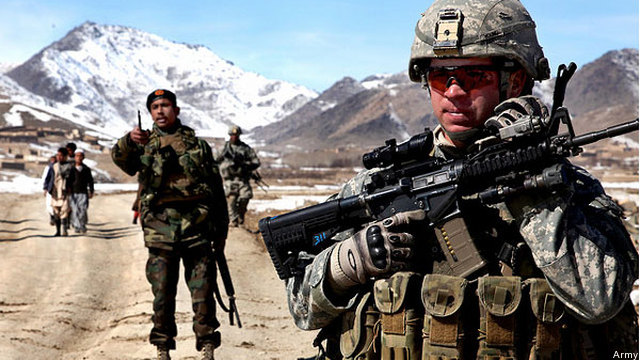 WASHINGTON: The Army may be in the cross-hairs of the budget cutters, but it’s had a surprisingly good week. While the number of soldiers will drop to 490,000 as long expected, the service is getting a lot of what it wanted to cushion that fall – starting with time.
WASHINGTON: The Army may be in the cross-hairs of the budget cutters, but it’s had a surprisingly good week. While the number of soldiers will drop to 490,000 as long expected, the service is getting a lot of what it wanted to cushion that fall – starting with time.
“As important as the 490[,000] number was the fact that we were able to do this over a six-year period,” said Gen. Ray Odierno, the Army Chief of Staff, at a Pentagon press conference. “[Army] Secretary McHugh and I are committed to ensuring we walk down this hill at the ready rather than running our nation’s Army off a cliff.”
Specifically, while the troop cuts will start in 2012, they don’t have to be complete until 2017. Slow and steady, in this case, makes for better personnel management. The steep cuts of the 1990s required buy-outs and other expensive expedients, which often backfired by paying talented troops to leave. This time, said Odierno, “We hope to do it mostly by attrition.” So as servicemembers finish out their current enlistment contracts, the Army simply needs to try a little less hard to sign them back up again. That should allow the service to be more selective about who gets offered reenlistment bonuses. (The reductions won’t be spread out perfectly evenly, however: The Army took in larger numbers of troops in the years it was growing, and their contracts will likewise expire in large “cohorts” concentrated in a few years).
The second silver lining is that the cuts, all things considered, aren’t that dramatic. “We had some problems in the [1990s] when we came down a significant number, almost over 300,000 in the Army,” said Odierno. Specifically, from 1987 to 1999, the active-duty Army dropped from 780,000 personnel to 480,000 – a 38 percent reduction. The current plan drops the Army from 570,000 to 490,000 – 14 percent.
Third, certain key cadres will be cut even less. Defense Secretary Leon Panetta promised in his own press conference yesterday that “the Army will retain more mid-level, mid-grade officers and NCOs…[a]nd they will maintain them even as their overall strength decreases to ensure that we have the structure and experienced leaders necessary to re-grow the force quickly if we have to.” This isn’t an uncontroversial decision: It means the sharpest cuts will come at the lowest ranks, increasing the relative percentage of officers and sergeants, who are often seen as “overhead.” But leaders take longer to train than grunts, and keeping extra chiefs around in case you suddenly need more Indians again is crucial to the Army’s contingency plans to re-expand in a hurry if it has to. So is a robust Army Reserve and National Guard, which Panetta also promised would get off relatively lightly, with what the official budget planning guidance called “only marginal reductions.”
Even the prospect of another controversial round of base closings doesn’t disturb Odierno unduly. “We’re going to request that we go through two more BRAC rounds,” Odierno said. But “the Army went through a very significant BRAC here not too long ago, and we did a fairly significant consolidation within the Army….I don’t think that you see a big installation being asked to close” in the United States.
Overseas, the Army will likely close installations in Europe as it disbands two brigades based there. But Panetta has promised to preserve a ground presence in both Korea and, more surprisingly, the Middle East. All told, the Army is “degrading gracefully,” to use a term from computer systems. But the service needs to do more than fight a rear-guard action, however successfully. To defend itself in the future rounds of budget fights sure to come, and to motivate the soldiers it wants to reenlist, the Army needs a positive vision of what its mission ought to be in the post-Afghanistan era. So far, instead, service leaders sound a little scattershot. “Over the past 236 years, the history of the United States Army has been marked by decisive action in a wide range of missions,” Odierno catalogued, “including regular/irregular warfare, humanitarian assistance operations, engaging with allies to build partner capacity and support to civil authorities.” But “we do everything” might not be enough for the rising generation of military leaders forged in the fires of Afghanistan and Iraq, the very people Odierno wants to keep, many of whom are seeking a new defining mission for the Army.
Move over FARA: General Atomics pitching new Gray Eagle version for armed scout mission
General Atomics will also showcase its Mojave demonstrator for the first time during the Army Aviation Association of America conference in Denver, a company spokesman said.


























